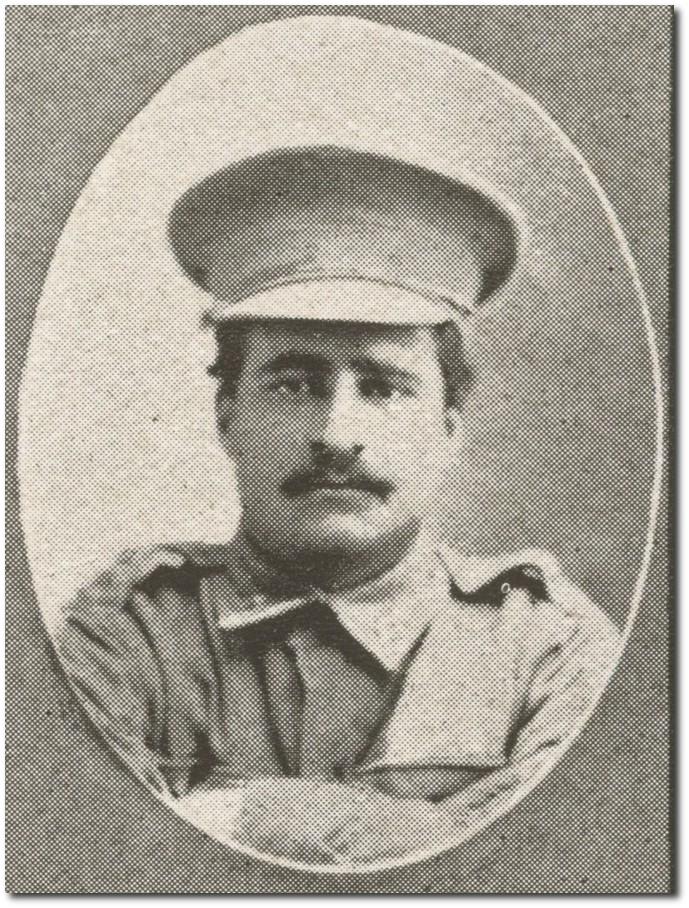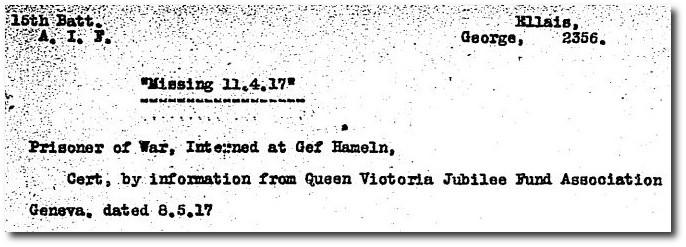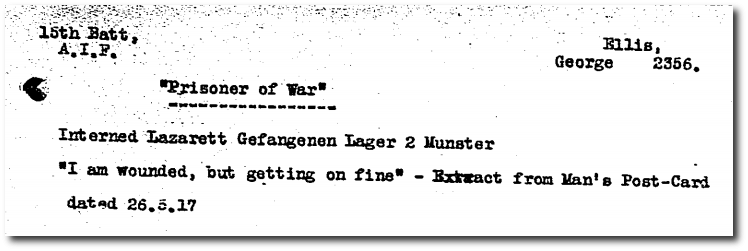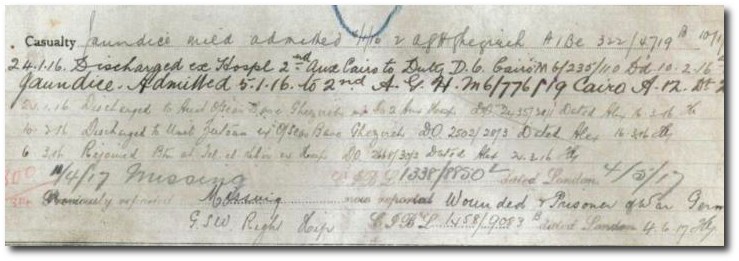
Indigenous Australian, George ELLIS, 15th Infantry Battalion
When George ELLIS volunteered to serve with the first AIF, no one suspected he was of Aboriginal heritage. From this photograph published in The Queenslander Pictorial in 1916, there is really nothing to distinguish him from any other keen recruit, stepping up to fight for “King and country.” Ellis, was born at Mungindi a small town on the QLD / NSW border, to George Ellis, an American, and Kate Denham, whose mother was Aboriginal. Ellis had been working as a stockman at St George, when he signed his enlistment papers.
George named his sister Harriet as his next-of-kin, and travelled to Brisbane to begin his training with the 7th Reinforcements for the 15th Infantry Battalion. Within three months he had left for overseas aboard the troopship HMAT 'Shrophsire' arriving in Egypt six weeks later. Within days this new group of reinforcements were shipped out to the island of Lemnos, the main staging area for supplying troops to fight on the Gallipoli Peninsula. On arrival they were placed in 'isolation' due to an outbreak of mumps and soon after embarked aboard SS Osmanich with 13 officers and 453 other-ranks landing at Anzac Cove in the early hours of 2 November 1915.
The 15th Battalion occupied a position in Hay Valley where they remained until being evacuated on 13 December as part of the main Allied withdrawal. After spending Christmas on Lemnos, they regrouped at Ismailia in north-eastern Egypt. In June 1916 George and his comrades left for France, arriving in the port of Marseilles, they travelled north by train to Bailleul, and marched to their billets scattered among the farms, nearby to the village.
The 15th Battalion was engaged in an attack on the Hindenburg Line, south of Riencourt on the morning of 11 April 1917, moving from their camp at Favreuil to the railway line. The operation was supported by tanks, but only one was able to reach its objective, and many men were caught in hand-to-hand combat in the barbed-wire entanglements of the front line.
On this day, George Ellis was reported missing in action. Ellis had been hit by a bullet in his right hip, which also fractured his thighbone. Unable to be retrieved by the stretcher bearers, he was taken prisoner and was included in a list of prisoners held by the Germans, forwarded by to the Red Cross by the 'British Help Committee' in May 1917.

Seriously wounded he was admitted to the hospital, located within Munster Prison Camp 2. The camp was one of 4 at Munster, a German army garrison town; no. 2 camp was located on the racecourse, which held 10's of thousands of allied prisoners from 1914-1918.

An extract from a post-card sent by George (received by the Red Cross) states: "I am wounded but getting on fine" dated 26 May 1917.
After being liberated in January 1919 he was granted an extra months leave, joining other repatriated prisoners who took the opportunity to see a little of England before sailing for home. When George returned to Brisbane in July 1919 he was examined at the 6th Australian General Hospital, Kangaroo Point where he presented with a compound fracture of the right thigh. Their report describes that while a prisoner of war he had 4 operations to remove 'foreign bodies' and was treated for infection, and subsequently his leg had healed short by an inch.

George Ellis and Rachel Cubby, Courtesy Tindale Collection, State Library of Queensland
George married Rachel Cubby in 1935 at Toomelah Aboriginal Mission and in the 1940s they were living at Bogabilla. Sadly, Rachel died in 1947, after which several of their children were removed to ‘care’; George died in 1965.
Read more ...
Service record: ELLIAS, George
Embarkation roll: 7th Reinf. 15th Infantry Battalion
Red Cross Wounded and Missing Files: ELLIS
Red Cross Wounded and Missing Files: ELLIAS
AIF Unit diary: 15th Infantry Battalion
Queensland’s Indigenous Servicemen
The information in this blog post has been researched by State Library staff and volunteers, it is based on available information at this time. If you have more information that you would like to share or further research uncovers new findings, this post will be updated.
Comments
Your email address will not be published.
We welcome relevant, respectful comments.

